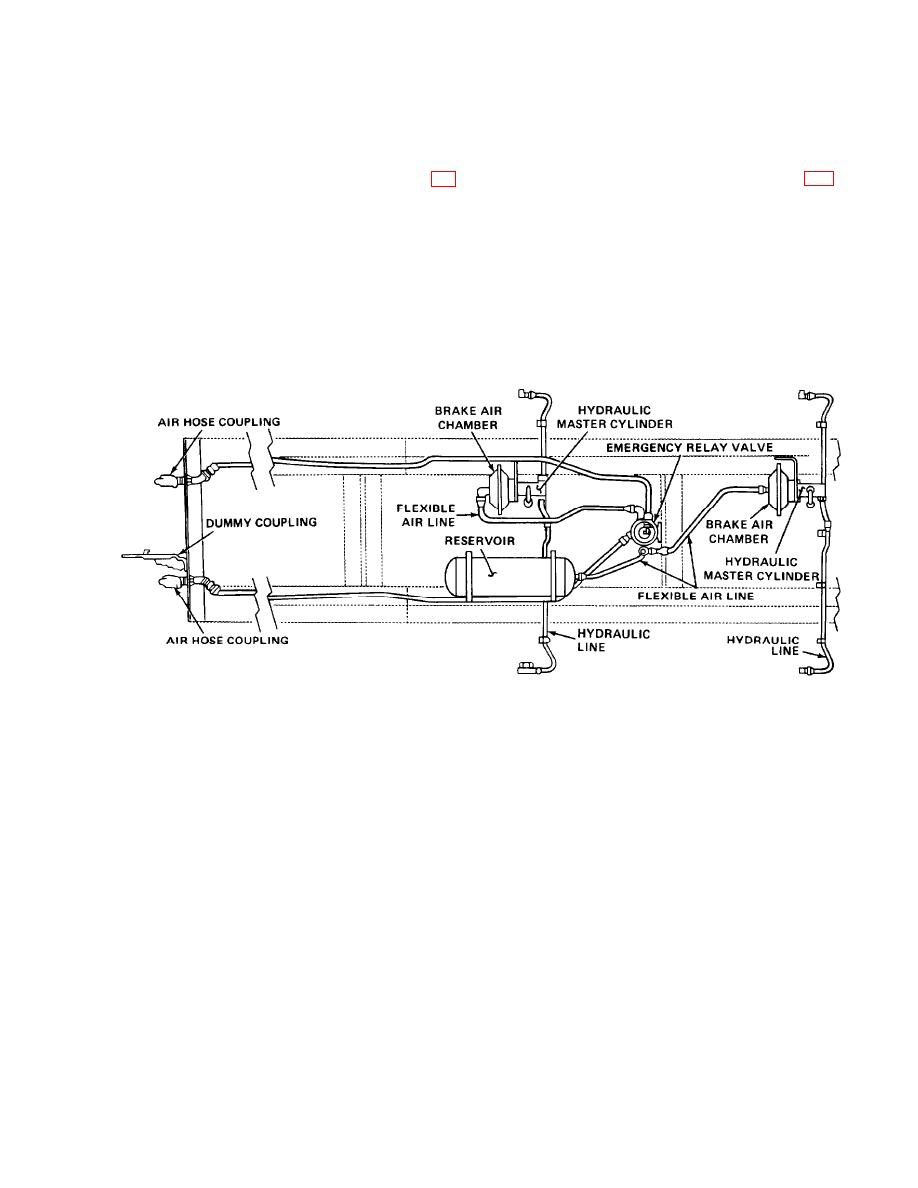
TM 9-2330-371-14&P
S e c t i o n Ill. PRINCIPLES OF OPERATION
Page
Page
Lighting System . . . . . . . . . . . . . . . . . . . . . . . . . . . . . . . . . . . . . . . . . 1-11
Airbrake System . . . . . . . . . . . . . . . . . . . . . . . . . . . . . . . . . . . . . . . . . . . 1-9
AIRBRAKE SYSTEM
Towing vehicle air pressure is sent through the emergency air line to the emergency relay valve and
then to the air reservoir. When towing vehicle brakes are applied, air is sent through the service air
line to the emergency relay valve. The relay valve then releases air from the reservoir to the air
chambers. Air pressure behind the chamber diaphragm pushes the piston in the master cylinder
which forces hydraulic fluid through the hoses to the brake cylinder. The cylinder forces the
brakeshoes against the brakedrum. Brakeshoe and drum friction slows, stops, and holds the
semitrailer until the brake pedal is released, allowing applied air to vent.
Emergency Relay Valve The emergency relay valve is located on the crossmember of the frame
between the axles. It speeds brake application by releasing air from the reservoir on the semitrailer
directly to the brake air chambers, eliminating the loss of time that would result if air to operate the
brakes had to travel from the towing vehicle to the semitrailer brake chambers. In addition, this valve
controls the flow of air to and from the semitrailer air reservoir and automatically applies the brakes if
the semitrailer breaks away from the towing vehicle or if there is a serious leak in the emergency air
line.
TA224179

